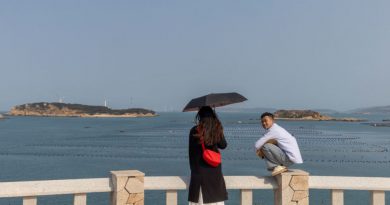More Rohingya take children as they leave Bangladesh by boat – aid groups
Dhaka (Reuters) – An increasing number of Rohingya people are leaving refugee camps in Bangladesh with their children, taking to boats in search of a better life as hopes fade of returning to Myanmar or being resettled, and camp life gets tougher, aid groups say.
Nearly one million members of the Muslim minority from Myanmar live in bamboo-and-plastic camps in the Bangladeshi border district of Cox’s Bazar, most after fleeing a military crackdown in Myanmar in 2017.
“A few years ago, these boats mostly carried young males,” said Chris Lewa, director of the Arakan Project that helps refugees, referring to small boats that set off from the Bangladesh and Myanmar coasts, usually bound for Southeast Asia.
“A large number aboard are entire families, parents with children, and sometimes extended families.”
Rohingya traditionally take to sea in October, at the end of the rainy season, on journeys fraught with danger. The boats, often over-crowded, can sink, or run out of food and water, and the Rohingya can fall into the hands of people smugglers.
Out of an estimated 1,084 Rohingya who came ashore in Indonesia’s Aceh province this month, 360 were children, 292 women and 238 men, according to U.N. refugee agency data.
Of 3,572 Rohingya who have left on 34 boats this year, 31% of them were children, data showed. About 65% of those leaving set off from Bangladesh this year, compared with 27% last year. Most of the rest leave from Myanmar.
In 2022, one of the deadliest years for the Rohingya at sea, a fifth of the about 3,705 people who fled were children.
“Children making the boat journeys was not a trend before,” said Mohammed Mizanur Rahman, Bangladesh’s refugee relief and repatriation commissioner based in Cox’s Bazar.
‘Desperate’
Rohingya have faced persecution in Buddhist-majority Myanmar for decades. They are generally regarded as foreign interlopers from South Asia, denied citizenship and subjected to abuse.
With little hope of settling in Bangladesh or being accepted elsewhere, they feel they have no choice but to take to sea, Rahman said.
“When an entire section becomes stateless, when they see no prospect of their repatriation or integrating into the countries they are settled in, they obviously become worried about the future of their next generation,” he said.
Aid workers say another factor contributing to more families deciding to take to sea is that conditions in the refugee camps are getting much more tough.
This year, the U.N. cut food aid to the refugees in Bangladesh by a third, to $8 per person a month because it has been able to raise less than half of the $876 million needed to support them. Many parents are skipping meals.
“You can’t even buy an egg with that,” said Rahman, referring to a meal allowance of about 9 Bangladeshi taka ($0.08) per person.
The chances of going home to Myanmar are more slim than ever. Myanmar’s military government has offered talks on repatriation but no progress has been made and insecurity is deteriorating with a growing insurgency against military rule.
“No one can think of going back right now,” said refugee Mohammed Taher in Cox’s Bazar, who knows two families that recently set off for Malaysia.
“Some people are desperate to leave by any means. They’re ready to take dangerous sea voyages knowing that they can end up dead.”



